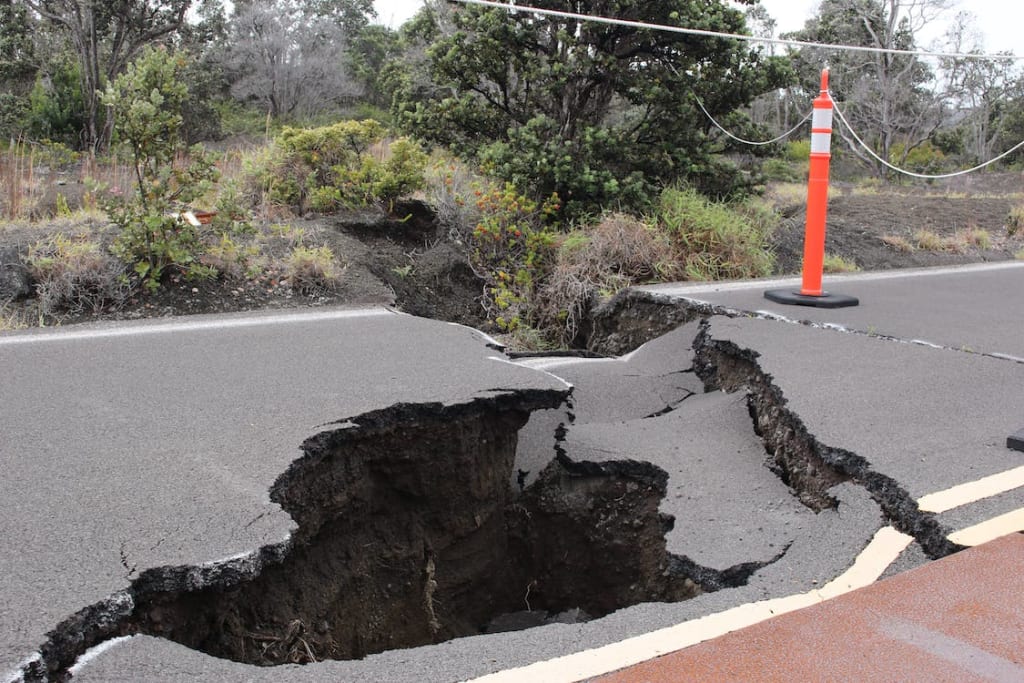GPS Data Unveils Potential for Earthquake Prediction Two Hours in Advance, but Challenges Remain
GPS Data Reveals Potential for Earthquake Prediction with Enhanced Sensors

An analysis of GPS data has revealed a slow and otherwise undetectable slip of tectonic plates that begins two hours before an earthquake - but detecting this in advance would require more accurate sensors.
Earthquakes could theoretically be predicted two hours before they occur, saving countless lives – but we must first develop GPS sensors that are 100 times more precise than those in use today.
Over the past few decades, expert opinion has shifted on whether any telltale seismic activity exists prior to earthquakes, or if they are inherently chaotic and unpredictable events. Now, Quentin Bletery and Jean-Mathieu Nocquet at Côte d’Azur University in Nice, France, may have settled the debate.
The pair have used GPS data to identify a gradual, accelerating slip between tectonic plates in the lead-up to an earthquake. These slips are too small to appear on seismographs but could – if detected – indicate when earthquakes are about to begin. Such an approach has been tried before, but Bletery says previous research has only looked at a handful of earthquakes and produced warning signs that are also seen when no earthquake follows, or that are observed an uncertain amount of time before the quake.
The researchers used GPS measurements gathered over a period of five minutes, making them accurate to within 1 centimetre, taken during the 48 hours prior to 90 separate earthquakes. With a combined data set of over 3000 measurements, they compared recorded ground movements with the expected direction of movement that each site would see during an earthquake.
In each case, they found that the largest movement in the expected direction occurred just prior to the earthquake. They also found that the last 23 data points showed a gradually increasing movement in the expected direction, and the final seven were higher than any others during the entire 48-hour period.
Bletery says that this is indicative of a gradual, slow and otherwise undetectable slip between tectonic plates starting around two hours before earthquakes – something that could lead to a reliable earthquake detector.
But there is a problem. Bletery says that the noise levels of current GPS sensors means that detection is only possible on the big data set, and not from any one site. That would require GPS sensors able to detect movements of just 0.1 millimetres, he says.
We can’t detect at the scale of one earthquake, so we cannot make predictions,” says Bletery. “But it tells us there’s something going on, and if we make significant progress in measurement – either the sensor itself, improving its sensitivity, or by just having more of them – we could be able to perceive things and make predictions.”
Roland Bürgmann at the University of California, Berkeley, says the work looks promising, but the proposed signals will need to be confirmed by further research. “There have been quite a few retrospective observations of various types of earthquake precursors in the past – foreshocks, deformation, etc – however, they are not unique in character from similar things happening at other times,” he says. “As Bletery and Nocquet see this two-hour-long precursor candidate looking at dozens of earthquakes, this looks somewhat promising.
Predicting earthquakes remains one of the most challenging tasks in the field of seismology. While researchers have made significant progress in understanding the causes and mechanisms behind earthquakes, accurately forecasting these devastating events in advance has remained elusive. However, a recent study by Quentin Bletery and Jean-Mathieu Nocquet from Côte d’Azur University has brought new hope for potential earthquake prediction using GPS data.
Traditionally, earthquakes were considered to be sudden and unpredictable events, caused by the release of stress accumulated between tectonic plates. As technology and understanding of earth sciences advanced, researchers began to explore the possibility of precursors—subtle signals or movements occurring before the actual earthquake. While many claimed to have found precursors in their research, the results were often inconclusive, and predictions remained uncertain.
Bletery and Nocquet's study takes a fresh approach by analyzing GPS data from regions prone to earthquakes. GPS (Global Positioning System) technology is widely used for navigation and positioning, relying on satellites to accurately measure the position of receivers on the ground. The researchers collected GPS measurements over 48 hours before 90 separate earthquakes, with a total of more than 3000 data points. The measurements were precise to within 1 centimeter, providing valuable insights into ground movements leading up to earthquakes.
To detect subtle tectonic plate movements, the researchers compared the recorded ground movements with the expected direction of movement during an earthquake at each site. They discovered a consistent pattern in the data: the largest movement in the expected direction occurred just before the earthquake, suggesting a gradual slip between tectonic plates in the hours preceding the seismic event.
What makes this discovery significant is that the observed slips were too small to appear on traditional seismographs. Seismographs are instruments that measure ground vibrations caused by earthquakes, but they may not capture these slow slips. Therefore, the GPS data offered a new perspective on earthquake precursors, potentially leading to more accurate predictions.
The study revealed that the last 23 data points before an earthquake showed an increasing movement in the expected direction, with the final seven data points registering the highest movement during the entire 48-hour period. This consistent pattern indicated a gradual, slow, and otherwise undetectable slip between tectonic plates, beginning approximately two hours before the earthquake.
However, the potential for earthquake prediction using GPS data comes with a caveat. The current noise levels of GPS sensors make it challenging to detect these subtle movements. To achieve reliable predictions, GPS sensors would need to be approximately 100 times more precise than the ones currently in use. This technological improvement presents a significant hurdle that researchers must overcome to realize the full potential of earthquake prediction using GPS data.
Despite the current limitations, Bletery remains optimistic about the research. While the current GPS data cannot predict earthquakes on an individual basis, it still indicates significant movements leading up to seismic events. Progress in measurement techniques, such as improving sensor sensitivity or deploying a larger number of GPS sensors, could enable researchers to perceive these movements and make more accurate predictions in the future.
Roland Bürgmann, a geophysicist at the University of California, Berkeley, views the research as promising but emphasizes the importance of confirming the proposed signals through further research. While the study's findings are encouraging, the scientific community must continue its efforts to validate and refine earthquake prediction techniques.
The quest for earthquake prediction has been a long and challenging journey, with numerous obstacles to overcome. Bletery and Nocquet's study marks a significant step forward in understanding earthquake precursors and the potential of GPS data in forecasting these natural disasters. With continued research and advancements in technology, the dream of predicting earthquakes and mitigating their impact may someday become a reality, saving countless lives and improving disaster preparedness worldwide.
About the Creator
Enjoyed the story? Support the Creator.
Subscribe for free to receive all their stories in your feed. You could also pledge your support or give them a one-off tip, letting them know you appreciate their work.





Comments
There are no comments for this story
Be the first to respond and start the conversation.